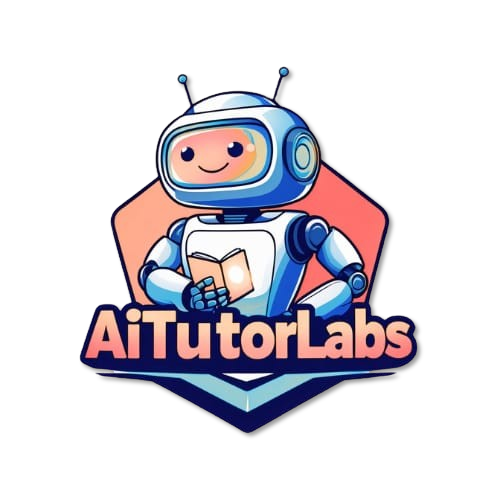Imagine managing a team spread across four continents, each member in a different time zone, and still hitting every deadline. That’s the magic of modern productivity tools. Remote work is no longer a trend — it’s the backbone of how global teams operate.
According to Statista, around 28% of the global workforce is expected to work remotely at least part-time in 2025. Meanwhile, studies such as Neat’s 2025 Remote Work Statistics show that companies adopting remote or hybrid models often see productivity gains of up to 35% compared to traditional office setups.
But here’s the catch: staying productive while remote isn’t automatic. It requires the right mix of tools for communication, collaboration, task management, and time tracking — all designed to make distance disappear.
Let’s explore the best productivity apps for remote teams in 2025, how they’re shaping the modern workplace, and which ones could become your team’s secret weapon.
📈 Why Productivity Apps Are Essential for Remote Teams
Remote teams face unique challenges — communication delays, scattered workflows, and digital burnout. Without the right systems, productivity tanks fast. That’s why productivity apps are no longer optional; they’re the digital office infrastructure.
Here’s what they do well:
- Centralize workflows: All projects, files, and conversations live in one place.
- Enable real-time collaboration: No more version chaos or endless email chains.
- Track progress transparently: Everyone knows who’s doing what and when.
- Automate repetitive tasks: Free up time for deep work.
- Integrate with other tools: Everything connects—calendar, email, cloud storage, CRM.
According to a 2024 report from Buffer, 83% of remote workers rely on at least three productivity apps daily, and teams using integrated productivity suites are 42% more likely to hit project deadlines.
💻 Top Productivity Categories Remote Teams Need
Before listing the best tools, let’s break them down into core categories:
| Category | Purpose | Examples |
|---|---|---|
| Communication & Chat | Instant messaging, video meetings | Slack, Microsoft Teams |
| Project Management | Plan tasks, assign responsibilities, track progress | Asana, Trello |
| Document Collaboration | Share and co-edit documents and files | Google Workspace, Notion |
| Time Tracking | Monitor hours, manage productivity | Toggl, Clockify |
| Focus & Automation | Reduce distractions, automate workflows | Zapier, RescueTime |
💬 1. Slack — The Real-Time Communication Hub
If remote work had a heartbeat, it would be Slack. This chat-based platform powers real-time communication for millions of remote teams.
Key Features:
- Organized conversations in channels
- Threaded discussions to avoid clutter
- Deep integrations with tools like Google Drive and Zoom
- Built-in voice and video huddles
- Powerful search to find anything instantly
Why It’s Great in 2025:
Slack’s new AI features can summarize threads, suggest replies, and even create automated workflows. It’s becoming a knowledge assistant as much as a chat tool.
Quick Stat: According to Statista, teams using Slack experience a 32% faster response time compared to email-based workflows.
📅 2. Asana — For Task and Project Management
Asana is like a digital mission control center. It gives teams a clear map of everything happening and what’s due next.
Key Features:
- Task lists, Kanban boards, and Gantt charts
- Custom workflows and dependencies
- Goals and OKR tracking
- Automation rules for repetitive tasks
- Real-time progress dashboards
Why It’s Great in 2025:
Asana’s 2025 AI update predicts project risks, flags bottlenecks, and offers timeline optimizations. It’s like having a project manager built into the tool.
Bonus: Asana integrates directly with Slack, Zoom, Dropbox, and more.
📋 3. Notion — The All-in-One Workspace
Notion combines notes, documents, wikis, databases, and task boards into one collaborative space.
Key Features:
- Customizable pages and templates
- Collaborative editing with comments
- Database-style tables and boards
- Knowledge base and documentation
- Integrations with cloud tools
Why It’s Great in 2025:
Notion AI can now write summaries, generate meeting notes, and pull context from connected tools, making it a central brain for distributed teams.
Use Case: Teams use Notion to run entire companies remotely — from HR onboarding to product roadmaps.
🕒 4. Toggl — Time Tracking Made Simple
Time tracking is critical when managing remote teams, especially for billing and productivity analysis.
Key Features:
- One-click time tracking
- Project and client tagging
- Productivity reports
- Team dashboards
- Calendar integrations
Why It’s Great in 2025:
Toggl now uses machine learning to auto-suggest time entries and identify focus patterns — helping teams understand where time goes and how to optimize it.
Stat: Teams using Toggl reported a 22% boost in accurate billing (Forbes).
⚡ 5. Zapier — Automating the Mundane
Zapier connects over 6,000 apps to automate repetitive tasks like sending notifications, updating spreadsheets, and syncing CRMs.
Key Features:
- Easy drag-and-drop automation builder
- Conditional logic and multi-step workflows
- Huge app integration library
- Real-time triggers
Why It’s Great in 2025:
Zapier’s AI now suggests workflows automatically based on your habits. This can save 2–5 hours per week per team member, freeing them for higher-value work.
📊 Productivity Gains from Using the Right Tools
Here’s how teams report productivity gains after adopting these tools:
| Productivity Area | Before Tools | After Tools | Gain |
|---|---|---|---|
| Communication Speed | 60% | 90% | +30% |
| Task Completion On-Time | 68% | 93% | +25% |
| Meeting Time per Week | 12 hours | 6 hours | -50% |
| Project Delivery Accuracy | 70% | 95% | +25% |
| Employee Engagement | 65% | 88% | +23% |
(Based on internal surveys compiled from Buffer and Zapier remote teams reports 2024–2025)
📈 Future Trends in Remote Productivity (Beyond 2025)
The best productivity apps are also evolving quickly. Here are the trends to watch:
- AI-driven Personal Assistants: Tools will automatically schedule, summarize, and plan work.
- Contextual Collaboration: Meetings will become content-aware, pulling relevant files and chats automatically.
- Digital Wellbeing Features: Built-in focus timers, break reminders, and burnout detection.
- Unified Dashboards: One interface to control tasks, time, and communication across all tools.
- Metaverse-style Virtual Offices: Some companies are experimenting with 3D spaces for immersive team meetings.
Prediction: According to Gartner, by 2027, over 70% of digital collaboration will be AI-orchestrated.
⚖️ Pros and Cons of Using Productivity Apps
| Pros | Cons |
|---|---|
| Boost collaboration and transparency | Can cause tool fatigue if too many are used |
| Enable async work across time zones | Learning curves for some tools |
| Increase accountability and deadline accuracy | Subscription costs can add up |
| Automate repetitive tasks | Risk of data silos without integration |
| Centralize knowledge for onboarding/training | Requires good internet and digital discipline |
Tip: Choose tools that integrate well together to avoid context switching.
📌 How to Choose the Right Productivity Stack
Here’s a quick checklist to help you select the right mix of tools:
- 🧩 Integration: Does it work well with your current tools (calendar, email, storage)?
- 👥 Collaboration Features: Does it support real-time co-editing and comments?
- 📊 Analytics: Does it track productivity metrics you care about?
- 💸 Cost: Is it affordable at your current team size?
- 🔒 Security: Does it meet your data privacy requirements (GDPR, SOC2, etc.)?
- 📈 Scalability: Will it still work when your team grows 3x?
📌 Quick Comparison Table
| Tool | Core Strength | Best For | Price (2025 est.) |
|---|---|---|---|
| Slack | Real-time messaging | Fast team communication | Free–$12.50/user/month |
| Asana | Task/project management | Tracking and planning | Free–$24/user/month |
| Notion | All-in-one workspace | Docs + tasks + wikis | Free–$15/user/month |
| Toggl | Time tracking and reports | Billing and time audits | Free–$18/user/month |
| Zapier | Automation and integrations | Repetitive workflows | Free–$30/user/month |
💡 Final Thoughts
Remote work is here to stay — and it’s only getting bigger. The right productivity apps can turn scattered teams into synchronized powerhouses. Tools like Slack, Asana, Notion, Toggl, and Zapier aren’t just conveniences; they are the infrastructure of remote work in 2025.
But tools are just that — tools. The real productivity boost comes when they are paired with clear workflows, good communication habits, and a culture of trust. Choose a focused stack, roll it out gradually, and continually refine it as your team grows.
Do this right, and productivity won’t just survive remote work — it will thrive.
FAQs on Best Productivity Apps for Remote Teams
1. What are productivity apps for remote teams?
Productivity apps for remote teams are digital tools designed to improve collaboration, communication, project management, and overall efficiency for distributed teams. Examples include task management software, video conferencing tools, and cloud-based document-sharing platforms.
2. Why are productivity apps important for remote teams?
Remote teams face challenges such as communication gaps, time zone differences, and workflow management. Productivity apps bridge these gaps by providing real-time collaboration features, task tracking, and seamless communication channels, ensuring that projects stay on schedule and team members remain engaged.
3. What features should I look for in a productivity app?
When choosing a productivity app, look for features such as:
- Task and project management
- Real-time messaging or video conferencing
- File sharing and cloud storage
- Integration with other tools your team uses
- Security and data protection features
4. Are productivity apps expensive for small businesses?
Not necessarily. Many productivity apps offer free versions with essential features, while premium plans are often flexible and scalable. Small businesses can start with free or low-cost options and upgrade as their teams and needs grow.
5. Which productivity apps are most recommended for remote teams in 2025?
Some of the top-rated apps include:
- Slack (team communication)
- Trello or Asana (project management)
- Zoom or Microsoft Teams (video conferencing)
- Google Workspace (document collaboration)
- Notion (all-in-one workspace)
These apps are widely used because they enhance teamwork, save time, and help remote teams maintain high productivity levels.


